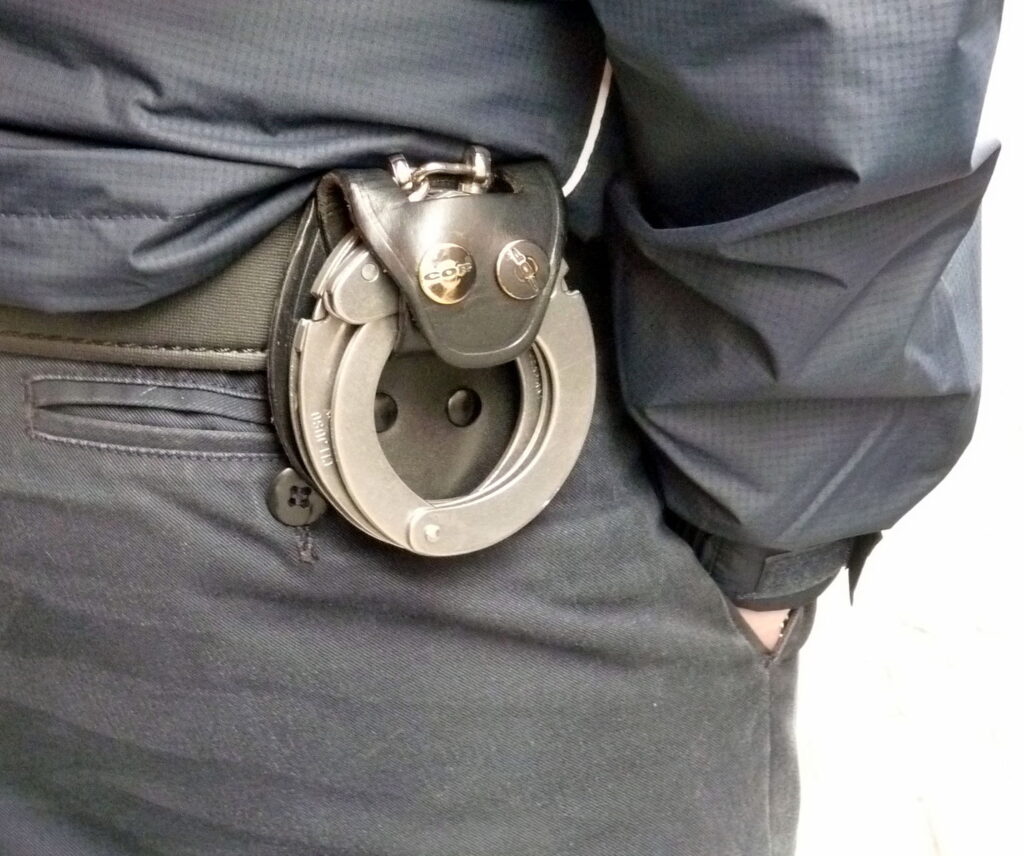The victim of Officer Laureano’s assault, Theodore Brubacher, testifies in an internal review board hearing—the first public one that the HPD has ever held, due to pressure from progressive Mayor Carrie Saxon Perry—that Laureano threatened to kill him, despite having given no resistance or provocation. Brubacher is a White honor roll student with a full scholarship and no history of police involvement, an image that surely contributes to the case’s robust media coverage.30 Laureano, arrested for third-degree assault and threatening, is found guilty of misconduct by the review board, fired, and then reinstated four months later. Stories such as this raise questions about the usefulness of terms like “police misconduct,” given that behavior, like that of Laureano, routinely goes without any substantial legal or financial consequences. For many, such official responses represent a condonement of behavior that is simultaneously characterized as an infraction or a violation. Perhaps such incidents could be more precisely referred to as mis/conduct.
Ironically, this event occurred on March third, the same day Rodney King was filmed being brutally beaten by LAPD officers. Perhaps the media momentum surrounding the King videotape, which was released immediately to local TV stations, provided the right conditions to bring attention to the Hartford beating as well. Or perhaps the synchronicity limited its reach. This parallel highlights the themes explored by the Carceral Connecticut Project, the quotidian violence which goes under – recognized across the nation unless brought to the attention by efforts outside the mainstream avenues of communicating worthy occurrences.
In the videotape, Laureano looks around to make sure no one is watching before punching Brubacher a second time. Perhaps this detail caught on film, indicating an accepted pattern of violence, is what inspires Hartford Courant writers Theresa Sullivan Barger and Andy Thibault to embark on a five-month investigation of the efficacy of the HPD’s internal review process. Barger and Thibault open their report by stating:
No one responsible for keeping police brutality in check in Hartford—not even the chief of police—knows how many officers are accused of brutality or who they are. Indications that could identify officers who may be repeatedly roughing people up have been ignored at every step of a review process that does little to expose and punish brutal officers. Even some members of the city’s internal review board, which judges the validity of brutality complaints, agree that restrictions prevent the board from deterring police brutality.31
The piece effectively reveals that HPD officers have unchecked power. Anonymous high-ranking officials told Barger and Thibault that they believe officers routinely lie to protect their colleagues, and those who do not lie believe in a code of silence. “Asked whether he had ever turned in another cop for using excessive force, Officer Bruce Tischoffer said in a deposition, ‘of course not. I’m from the old school. A cop doesn’t rat on another cop.’”32 In one of the rare cases in recent years, a complaint of excessive force was upheld by the HPD’s internal review board—which is composed of three members of the HPD and four civilians, one of whom consistently breaks the tie in favor of the officer. When the offending officer was fired, his colleagues picketed city hall to demand his rehiring. They were successful.
The investigation has an impact on Chief Loranger. “The Courant found that at least 109 officers have been sued on brutality charges since 1983. Eight were sued three times and 14 others were sued twice. When these findings were brought to Loranger in June, he said, ‘One thing does disturb me—the number of officers who have been sued more than once. I’d like to take a closer look at those.’”33 By the time the report is published, Loranger had instituted two new policies: requiring two days refresher training of any officer who receives three or more complaints in a year regardless of whether or not they are sustained; and sending a supervisor to respond to the scene any time an officer uses force to subdue someone. Loranger had also spoken with the city’s corporation counsel to discuss collecting more information about lawsuits related to use of force, and the counsel asked the city’s insurers, Traveler’s Corp, to begin coding such cases separately so that they could be tracked. After the report’s publication, city and police officials announce plans to overhaul the entire investigation procedure for complaints of excessive force. The effects of the Courant report are impressive. Due to media attention, Loranger proves more willing to change department norms than any chief involved directly in Cintron proceedings. This raises questions about the efficacy of different arenas of police reform; is the media a more promising avenue for advancing progress than the judiciary or the legislature? Although replete with limitations and outside interests, the media has potential as a kind of fourth branch, more intimately tied to public opinion—and able to harness the power of the people—than any one arm of the government.
The initial reflexivity incited by the Courant report, however, does not seem to effect any practical change in policing, inviting suspicion that the department was pandering to the media rather than recommitting itself internally. In November, another officer assault of a handcuffed suspect is caught on camera, this time by a local news camera team. The event led one public commentator to write, “If a television camera captures one such incident, it’s a safe bet that there are others happening around the city. It seems the message isn’t getting through to some officers, if indeed it is being delivered at all.”35 The officer claims he had been protecting himself and others, since the suspect claimed to have AIDS and was spitting at them. Having effectively harnessed public fears surrounding this public health epidemic, the officer does not face any charges.36 The ease with which these acts of violence are revealed and ultimately condoned underscore their continuity with the project of policing. “Excessive” force is a claim proposed by those external to the HPD’s functioning logic. Within the department, acts of force are almost never found to be illegitimate. To the Hartford residents harmed by police actions, the blurred line between mis/conduct is no line at all.
Notes
30. Theresa Sullivan Barger, “Officer Reassigned After U Of H Riot,” Hartford Courant, March 7, 1991, ProQuest. See also Gina Brisgone, “Police Officer Censured: Review Board Finds Excessive Force Used on U of H Student,” Hartford Courant, August 2, 1991, ProQuest.
31. Theresa Sullivan Barger and Andy Thibault, “Flawed System Shields Violent Officers From Detection,” Hartford Courant, September 30, 1991, ProQuest.
32. Ibid.
33. Ibid.
34. “Caught In The Act, Again,” Hartford Courant, November 8, 1991, ProQuest
35. Gina Brisgone, “Tape Shows City Police Hitting Suspect,” Hartford Courant, November 6, 1991, ProQuest.
36. Andrew Julien, “Officer Acted In Self-Defense, Officials Say,” Hartford Courant, December 12, 1991, ProQuest.

